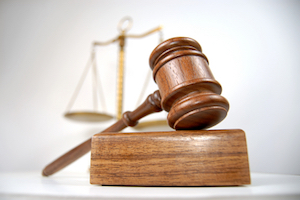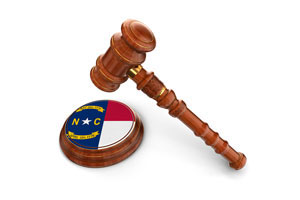A Mississippi jury convicted Joshua Clark of murdering his four-month-old daughter, Kyllie Clark. That tragic death spawned a tragic prosecution that was based on the discredited diagnosis of shaken baby syndrome.
The alleged “syndrome” has been debunked, a reality that too many prosecutors refuse to acknowledge. Prosecution experts continue to testify that they can confidently diagnose the cause of a baby’s death from evidence that is inherently ambiguous. Fortunately, the Mississippi Court of Appeals recently recognized that convictions based on discredited expert testimony are inconsistent with the right to a fair trial.
Facts of the Case
Kylie died in 2008, a time when (as the court noted) criminal charges based on shaken baby syndrome were common. Clark had no criminal record. Clark’s wife knew he was a good father. Although several people lived in Clark’s home, no witness had ever seen Clark shake or mistreat his baby. For that matter, no witness ever saw Clark mistreat any of his children.
Clark’s wife left the home in the middle of the afternoon to run errands. Clark stayed home to watch their children. About ten minutes before his wife returned, Kyllie (who had been fussy all day) made a gasping sound and went limp.
Clark’s wife returned as Clark was getting dressed so he could take Kyllie to a doctor. Clark’s wife attempted CPR. Clark and his wife then rushed Kyllie to the hospital. As she was entering the hospital, Clark’s wife bumped Kyllie into the hospital door.
Kyllie did not respond to aggressive medical efforts to revive her. Doctors at the hospital thought that Kyllie probably experienced sudden infant death syndrome.
Medical staff took Kyllie to a children’s hospital. More efforts were made to revive her. Kyllie was diagnosed with rib fractures, retinal and subdural hemorrhages, and brain swelling. She was declared brain dead and removed from life support.
Dr. Karen Lakin, a pediatrician, concluded that tests showed older bleeding of the brain followed by a new bleed. A police investigation later revealed potential causes of an earlier brain injury, none of which were associated with Clark.
Dr. Lakin noted her opinion in the medical records that Kyllie died from shaken baby syndrome. A social worker reviewed that record and made a child abuse report to the police. Because Kyllie was in Clark’s exclusive care when she began to experience breathing difficulties, the police decided that Clark must have injured her. The murder charge followed.
Trial Court Proceedings
Clark’s lawyer, perhaps fearing Clark would be sentenced to death if convicted, advised Clark to plead guilty to a reduced charge of depraved-heart murder. The lawyer did not consult an expert witness and was apparently unaware of the controversy surrounding a diagnosis of shaken baby syndrome. Clark entered the plea and was sentenced to life imprisonment.
The trial court later granted a postconviction motion to withdraw the plea. The judge decided that Clark’s lawyer breached the duty to provide effective assistance to a client. In the court’s view, an effective lawyer would investigate the medical evidence and would retain an expert witness to challenge a prosecution witness who alleged that death was caused by shaken baby syndrome.
The case went to trial after Clark withdrew his plea. Dr. Lakin, having learned that shaken baby syndrome is a discredited diagnosis, now referred to the diagnosis as abusive head trauma. Nothing about the diagnosis, other that the term used to describe it, actually changed. Given the adverse publicity surrounding shaken baby syndrome, some child abuse pediatricians who cling to the belief that the syndrome can be infallibly diagnosed have tried to avoid controversy by giving the syndrome a new name.
Clark’s lawyer filed a motion to exclude Dr. Lakin’s testimony on the ground that abusive head trauma is not a medically accepted diagnosis in the absence of external evidence of an injury. Although the motion was supported by a wealth of scientific literature, the trial court allowed Dr. Lakin to testify.
Dr. Lakin testified that someone killed Kyllie by shaking her. She also testified to an absolute certainty that trauma was inflicted within the three hours during which Kyllie was in Clark’s exclusive care. On cross-examination, however, Dr. Lakin admitted that she could not determine the exact time at which Kyllie’s brain injury occurred.
Dr. Lakin testified that her opinion was supported by research findings that were endorsed by the American Academy of Pediatrics (AAP). On cross-examination, she admitted that she was unaware of the AAP’s updated position, which acknowledges that no simple test distinguishes between accidental and intentional causes of brain trauma. Dr. Lakin was also unaware that the AAP no longer advises pediatricians to presume that child abuse occurred when subdural hematoma, retinal hemorrhages, and brain swelling are found.
Dr. Lakin admitted that she did not examine Kyllie for a neck injury. She also admitted that Kyllie’s rib fractures were healing and acknowledged that healing does not start until a week after the injury occurs. Notwithstanding the notation she made in her medical records, she testified that she didn’t mean to imply that Clark had anything to do with Kyllie’s rib injuries.
Defense Expert Evidence
Testifying as a defense expert, forensic pathologist Dr. Mark Shuman told the jury that Kyllie’s brain injury was probably caused by a blunt head injury or impact head injury, not by being shaken. Dropping a baby or dropping something on a baby’s head are examples of accidents that could produce a blunt head injury or impact head injury. Relying on biomechanical engineering studies, Dr. Schuman testified that the absence of any neck injury ruled out any likelihood that Kyllie was shaken.
Dr. Schuman explained that the onset of symptoms of a brain injury can be delayed. He therefore disagreed with Dr. Lakin that symptoms always develop immediately after a brain injury and that Kyllie must therefore have been injured while she was in Clark’s exclusive care. Dr. Schuman also cited studies proving that retinal hemorrhages can have many causes, including efforts to revive a baby.
According to Dr. Schuman and a pathologist who testified for the prosecution, the best way to place a date on a brain injury is to prepare a histology slide of the dura (the connective tissue that forms a membrane surrounding the brain). They also agreed that the histology slides created under the supervision of a state-contracted doctor were poorly prepared, and none could be used to place a date on the brain bleeding.
In general, Dr. Schuman explained that forensic pathologists focus on science-based conclusions. While many pediatricians believe that shaken baby syndrome is a valid diagnosis, Dr. Schuman noted that no scientific study has ever established that it is possible to shake a baby hard enough to cause a primary brain injury. Nor does any study explain how a baby shaken that hard could avoid having a neck injury.
Clark testified that he did not abuse Kyllie. No witness saw him abusing Kyllie. The Mississippi jury nevertheless found him guilty. The judge sentenced Clark to forty years in prison.
Appellate Analysis of Daubert Motion
The Mississippi Court of Appeals concluded that the trial court should not have admitted Dr. Lakin’s testimony. Both the Daubert hearing and Dr. Lakin’s trial testimony made it plain that Dr. Lakin’s shaken baby syndrome diagnosis was not grounded in a reasonable scientific methodology.
The appellate court noted that Dr. Lakin has testified for the prosecution in other cases, but noted that an expert’s opinion in each individual case must be grounded on a reliable methodology and based on adequate facts. Whether Dr. Lakin met that standard in the past does not determine whether her present opinions are admissible. In addition, newer research debunking a diagnosis of shaken baby syndrome undermines the continuing reliability of that diagnosis.
A prosecution-friendly dissent argued that Dr. Lakin is a qualified expert. The majority did not take issue with Dr. Lakin’s qualifications. Rather, the majority focused on whether she based her opinions in Clark’s case on a reliable methodology.
The court noted that “Dr. Lakin needed to establish that a qualified pediatrician can reliably diagnose a child with Kyllie’s injuries (subdural hemorrhages and retinal hemorrhages) as a child suffering from injuries caused by [shaken baby syndrome].” Dr. Lakin also needed to establish the time at which the injuries occurred because timing was the sole evidence against Clark. She did neither of those things.
Dr. Lakin admitted that many articles in a variety of specialties, from biomechanics to neuropathology, conclude that shaken baby syndrome is not a reliable diagnosis. She does not know the error rate associated with the diagnosis and has not conducted any research of her own to determine whether other causes, such as a fall from a short height, might cause the same symptoms. She could cite no supporting evidence for her opinion that brain injuries always cause immediate symptoms. She thought there might be literature from the AAP to support her opinion but the prosecution failed to produce it, despite promising to do so at the Daubert hearing.
In contrast to Dr. Lakin, Clark produced overwhelming medical evidence at the Daubert hearing to establish the unreliability of a shaken baby syndrome diagnosis. The appellate court recognized that evidence-based medical experts are increasingly abandoning the belief that the diagnosis is sound.
The trial judge evaluated none of that evidence. The judge simply decided that Dr. Lakin was qualified to testify. Because the judge failed to carry out the judicial gatekeeping function imposed by Mississippi’s adoption of the Daubert rule, the appellate court reversed Clark’s conviction.
Surprisingly, the court remanded the case for a new trial. It did so after finding that the only evidence of Clark’s guilt was improperly admitted. Disregarding Dr. Lakin’s expert evidence leaves no admissible evidence at all upon which the jury could find Clark guilty. Since the admissible evidence fails to prove guilt beyond a reasonable doubt, Clark was entitled to an acquittal. The prosecution should not have a second chance to convict him.
Lessons Learned
Clark’s case is a further reminder that expert evidence for the prosecution should always be challenged. In Daubert states, a careful motion that is supported by a defense expert can lead to the exclusion of unreliable evidence. Defense attorneys who consult with experts in order to challenge prosecution experts can save defendants from a wrongful conviction.












